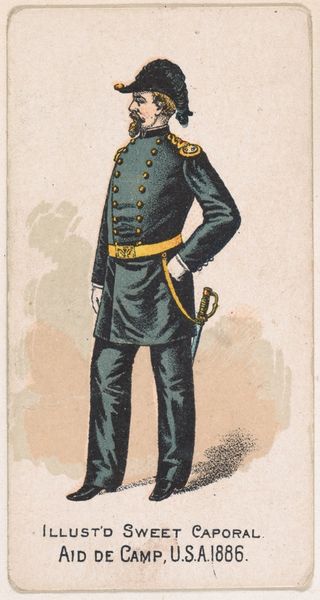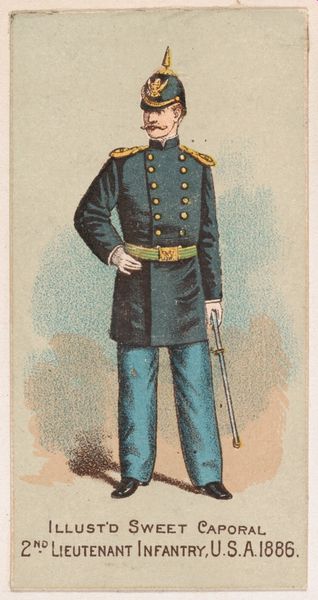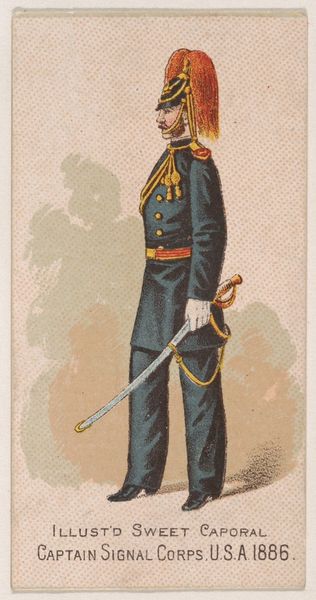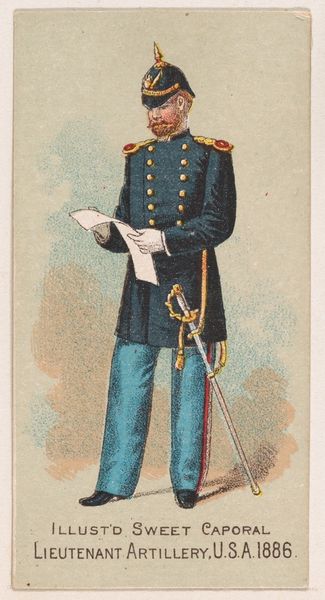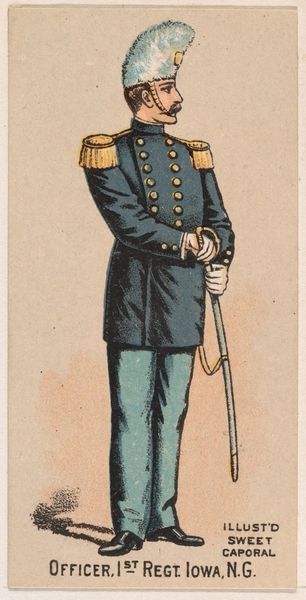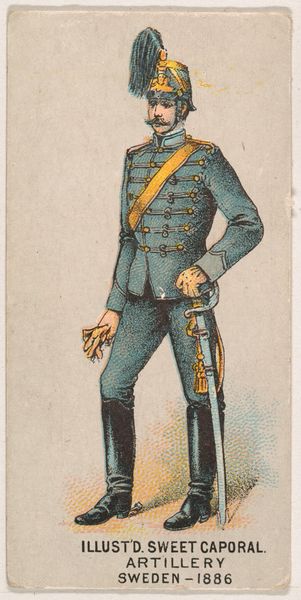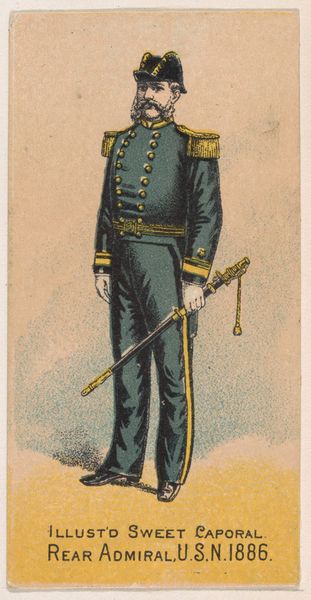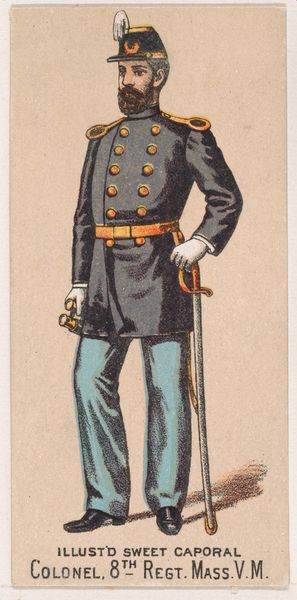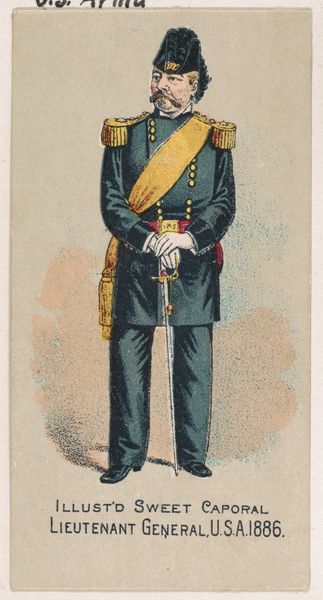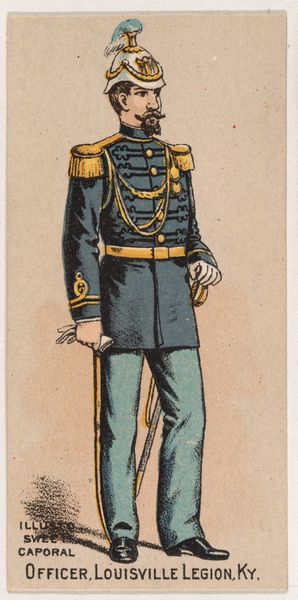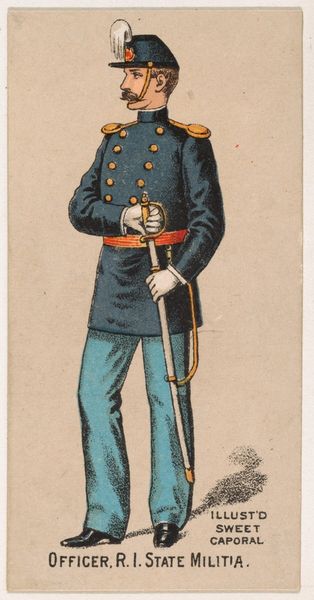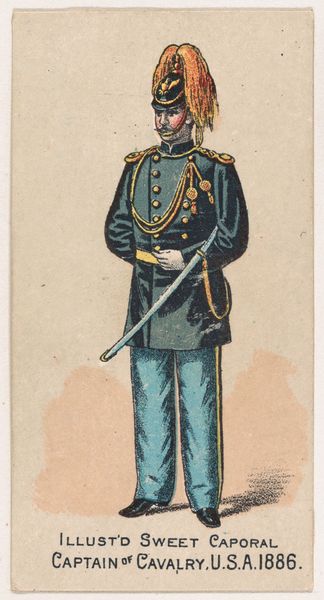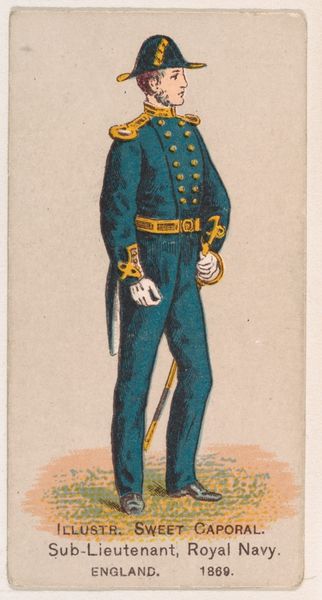
Aid de Camp, United States Army, 1886, from the Military Series (N224) issued by Kinney Tobacco Company to promote Sweet Caporal Cigarettes 1888
0:00
0:00
drawing, print
#
portrait
#
drawing
# print
#
caricature
#
caricature
#
figuration
#
men
#
genre-painting
#
academic-art
#
profile
Dimensions: Sheet: 2 3/4 × 1 1/2 in. (7 × 3.8 cm)
Copyright: Public Domain
Curator: This image, circa 1888, depicts an "Aid de Camp, United States Army, 1886." It is part of the Military Series by Kinney Tobacco Company, crafted to promote Sweet Caporal Cigarettes. It's currently held at the Metropolitan Museum of Art. Editor: Well, first impression: quite stiff and formal. The severe profile, the abundance of buttons… it evokes a sense of rigid hierarchy. And the high contrast gives it a crisp, almost militaristic feel. Curator: The piece employs a drawing and print medium, reflecting the era’s mode of mass production and distribution of images tied to commodity culture. Tobacco companies frequently used such cards to boost sales. How does the material context shape your interpretation? Editor: Materially speaking, the smoothness of the print, devoid of expressive brushstrokes, enforces the sense of impersonal authority. Note also how the gold accents and fine lines highlight the details of the uniform, transforming the military man into a commodity for popular consumption. Curator: Right, consider too the social impact. These cards weren’t viewed as 'high art' but functioned within a complex system involving labor, manufacturing, and consumption habits. The working class likely engaged with such images regularly through their smoking habits. Editor: True. Shifting our focus back to the form: Observe the interplay between line and color. The dark uniform contrasts with the bright gold, drawing the eye towards his position. This figure commands visual authority, as much through compositional tricks as actual rank. Curator: I'm drawn to how this seemingly simple image intersects with both high art—portraiture—and low culture, cheap, distributed cards. The artist elevates, with details, while cheapening the entire military industrial project by inserting it within quotidian consumption. It reflects how cultural value is constantly created and negotiated. Editor: Absolutely. It's a reminder that art doesn't exist in a vacuum; it interacts with its environment, informing it while it also comments upon it. Curator: Thank you. I now have a wider vision of this object. Editor: Yes, I believe I am ready to face my afternoon knowing that such images also have their cultural influence as art and commentary on its age.
Comments
No comments
Be the first to comment and join the conversation on the ultimate creative platform.
